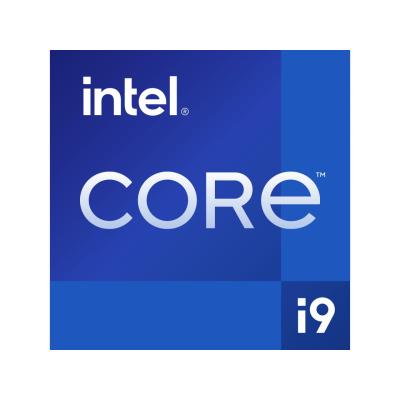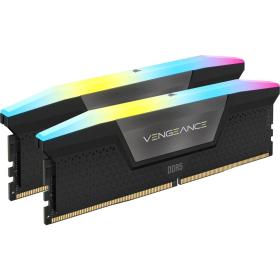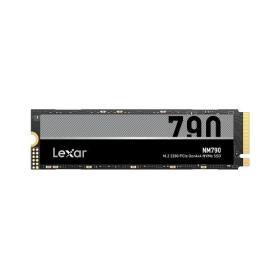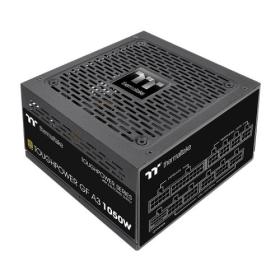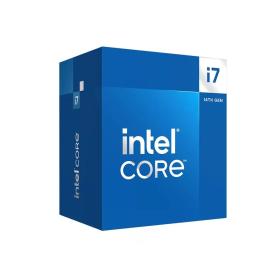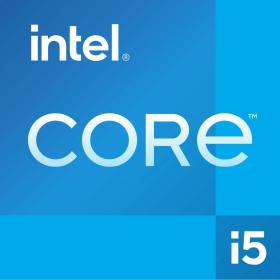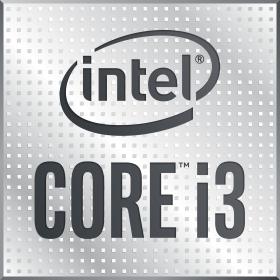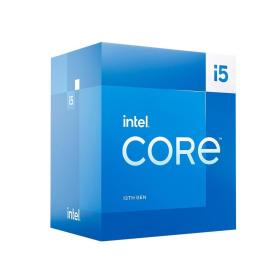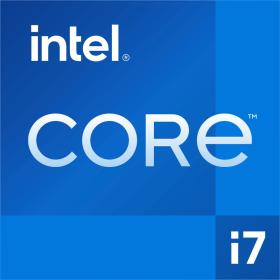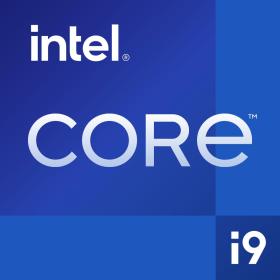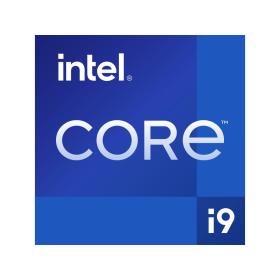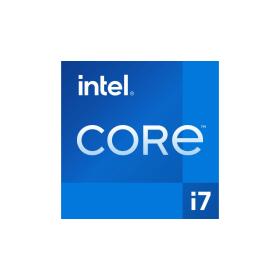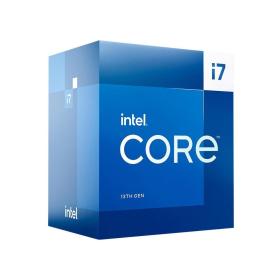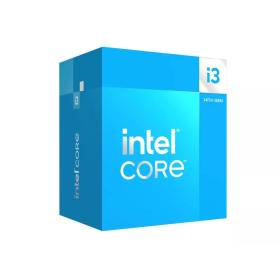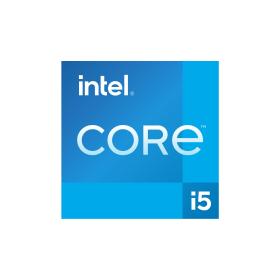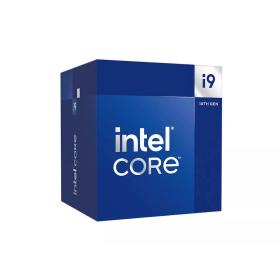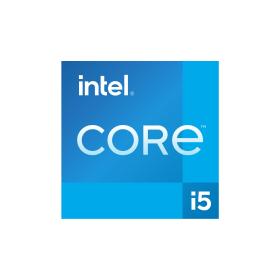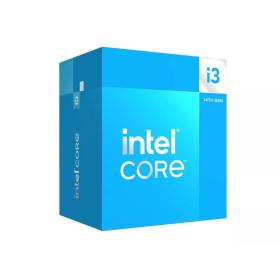Intel Core i9-13900K processor 36 MB Smart Cache Box
Intel Core i9-13900K, Intel® Core™ i9, LGA 1700, Intel, i9-13900K, 64-bit, 13th gen Intel® Core™ i9
SADDYTECH CONSIGLIA TRIPPODO
VALIDO CON TRIPPODO PLUS
● Prodotto nuovo.
● Garanzia 24 mesi.
● Soddisfatto o rimborsato 30 giorni.
● Lavorazione entro 1/2 giorni lavorativi.
● Consegna entro 4 giorni lavorativi.
● Sabato e Domenica esclusi.
● Gli ordini effettuati dopo le 13.00 verranno elaborati il giorno seguente.
Intel® Gaussian & Neural Accelerator (GNA) is an ultra-low power accelerator block designed to run audio and speed-centric AI workloads. Intel® GNA is designed to run audio based neural networks at ultra-low power, while simultaneously relieving the CPU of this workload.
Intel® Deep Learning Boost (Intel® DL Boost)
A new set of embedded processor technologies designed to accelerate AI deep learning use cases. It extends Intel AVX-512 with a new Vector Neural Network Instruction (VNNI) that significantly increases deep learning inference performance over previous generations.
Intel® Speed Shift Technology
Intel® Speed Shift Technology uses hardware-controlled P-states to deliver dramatically quicker responsiveness with single-threaded, transient (short duration) workloads, such as web browsing, by allowing the processor to more quickly select its best operating frequency and voltage for optimal performance and power efficiency.
Intel® Turbo Boost Technology
Intel® Turbo Boost Technology dynamically increases the processor's frequency as needed by taking advantage of thermal and power headroom to give you a burst of speed when you need it, and increased energy efficiency when you don’t.
Intel® Hyper-Threading Technology
Intel® Hyper-Threading Technology (Intel® HT Technology) delivers two processing threads per physical core. Highly threaded applications can get more work done in parallel, completing tasks sooner.
Intel® 64
Intel® 64 architecture delivers 64-bit computing on server, workstation, desktop and mobile platforms when combined with supporting software.¹ Intel 64 architecture improves performance by allowing systems to address more than 4 GB of both virtual and physical memory.
Instruction Set
An instruction set refers to the basic set of commands and instructions that a microprocessor understands and can carry out. The value shown represents which Intel’s instruction set this processor is compatible with.
Idle States
Idle States (C-states) are used to save power when the processor is idle. C0 is the operational state, meaning that the CPU is doing useful work. C1 is the first idle state, C2 the second, and so on, where more power saving actions are taken for numerically higher C-states.
Enhanced Intel SpeedStep® Technology
Enhanced Intel SpeedStep® Technology is an advanced means of enabling high performance while meeting the power-conservation needs of mobile systems. Conventional Intel SpeedStep® Technology switches both voltage and frequency in tandem between high and low levels in response to processor load. Enhanced Intel SpeedStep® Technology builds upon that architecture using design strategies such as Separation between Voltage and Frequency Changes, and Clock Partitioning and Recovery.
Thermal Monitoring Technologies
Thermal Monitoring Technologies protect the processor package and the system from thermal failure through several thermal management features. An on-die Digital Thermal Sensor (DTS) detects the core's temperature, and the thermal management features reduce package power consumption and thereby temperature when required in order to remain within normal operating limits.
Intel® Volume Management Device (VMD)
Intel® Volume Management Device (VMD) provides a common, robust method of hot plug and LED management for NVMe-based solid state drives.
Intel® Standard Manageability (ISM)
Intel® Standard Manageability is the manageability solution for Intel vPro® Essentials platforms and is a subset of Intel® AMT with out-of-band management over Ethernet and Wi-Fi, but no KVM or new life cycle management features.
Intel® Control-Flow Enforcement Technology
CET - Intel Control-flow Enforcement Technology (CET) helps protect against the misuse of legitimate code snippets through return-oriented programming (ROP) control-flow hijacking attacks.
Intel® AES New Instructions
Intel® AES New Instructions (Intel® AES-NI) are a set of instructions that enable fast and secure data encryption and decryption. AES-NI are valuable for a wide range of cryptographic applications, for example: applications that perform bulk encryption/decryption, authentication, random number generation, and authenticated encryption.
Secure Key
Intel® Secure Key consists of a digital random number generator that creates truly random numbers to strengthen encryption algorithms.
Execute Disable Bit
Execute Disable Bit is a hardware-based security feature that can reduce exposure to viruses and malicious-code attacks and prevent harmful software from executing and propagating on the server or network.
Intel® Boot Guard
Intel® Device Protection Technology with Boot Guard helps protect the system’s pre-OS environment from viruses and malicious software attacks.
Mode-based Execute Control (MBEC)
Mode-based Execute Control can more reliably verify and enforce the integrity of kernel level code.
Intel® Virtualization Technology (VT-x)
Intel® Virtualization Technology (VT-x) allows one hardware platform to function as multiple “virtual” platforms. It offers improved manageability by limiting downtime and maintaining productivity by isolating computing activities into separate partitions.
Intel® Virtualization Technology for Directed I/O (VT-d)
Intel® Virtualization Technology for Directed I/O (VT-d) continues from the existing support for IA-32 (VT-x) and Itanium® processor (VT-i) virtualization adding new support for I/O-device virtualization. Intel VT-d can help end users improve security and reliability of the systems and also improve performance of I/O devices in virtualized environments.
Intel® VT-x with Extended Page Tables (EPT)
Intel® VT-x with Extended Page Tables (EPT), also known as Second Level Address Translation (SLAT), provides acceleration for memory intensive virtualized applications. Extended Page Tables in Intel® Virtualization Technology platforms reduces the memory and power overhead costs and increases battery life through hardware optimization of page table management.
Intel® Thermal Velocity Boost
Intel® Thermal Velocity Boost (Intel® TVB) is a feature that opportunistically and automatically increases clock frequency above single-core and multi-core Intel® Turbo Boost Technology frequencies based on how much the processor is operating below its maximum temperature and whether turbo power budget is available. The frequency gain and duration is dependent on the workload, capabilities of the processor and the processor cooling solution.
Intel® Stable IT Platform Program (SIPP)
The Intel® Stable IT Platform Program (Intel® SIPP) aims for zero changes to key platform components and drivers for at least 15 months or until the next generational release, reducing complexity for IT to effectively manage their computing endpoints.
Intel Core i9-13900K. Processor family: Intel® Core™ i9, Processor socket: LGA 1700, Processor manufacturer: Intel. Memory channels: Dual-channel, Maximum internal memory supported by processor: 128 GB, Memory types supported by processor: DDR4-SDRAM, DDR5-SDRAM. On-board graphics card model: Intel UHD Graphics 770, On-board graphics card outputs supported: Embedded DisplayPort (eDP) 1.4b, DisplayPort 1.4a, HDMI 2.1, On-board graphics card base frequency: 300 MHz. Market segment: Desktop, Use conditions: PC/Client/Tablet, Workstation, PCI Express slots version: 4.0, 5.0. Intel® Turbo Boost Max Technology 3.0 frequency: 5.7 GHz, Intel® Thermal Velocity Boost Frequency: 5.8 GHz
| Processor | |
| Processor manufacturer | Intel |
| Processor family | Intel® Core™ i9 |
| Processor generation | 13th gen Intel® Core™ i9 |
| Processor model | i9-13900K |
| Processor cores | 24 |
| Processor socket | LGA 1700 |
| Box | Y |
| Processor threads | 32 |
| Processor operating modes | 64-bit |
| Performance cores | 8 |
| Efficient cores | 16 |
| Processor boost frequency | 5.8 GHz |
| Performance-core boost frequency | 5.4 GHz |
| Performance-core base frequency | 3 GHz |
| Efficient-core boost frequency | 4.3 GHz |
| Efficient-core base frequency | 2.2 GHz |
| Processor cache | 36 MB |
| Processor cache type | Smart Cache |
| Maximum turbo power | 253 W |
| Stepping | B0 |
| Bus type | DMI4 |
| Maximum number of DMI lanes | 8 |
| Processor codename | Raptor Lake |
| Memory | |
| Maximum internal memory supported by processor | 128 GB |
| Memory types supported by processor | DDR4-SDRAM, DDR5-SDRAM |
| Memory channels | Dual-channel |
| Memory bandwidth (max) | 89.6 GB/s |
| Graphics | |
| Discrete graphics card | N |
| On-board graphics card model | Intel UHD Graphics 770 |
| On-board graphics card outputs supported | Embedded DisplayPort (eDP) 1.4b, DisplayPort 1.4a, HDMI 2.1 |
| On-board graphics card dynamic frequency (max) | 1650 MHz |
| Number of displays supported (on-board graphics) | 4 |
| On-board graphics card OpenGL version | 4.5 |
| On-board graphics card maximum resolution (HDMI) | 4096 x 2160 pixels |
| On-board graphics card refresh rate at maximum resolution (HDMI) | 60 Hz |
| On-board graphics card ID | 0xA780 |
| Discrete graphics card model | Not available |
| Number of execution units | 32 |
| Multi-Format Codec Engines | 2 |
| Features | |
| Thermal Monitoring Technologies | Y |
| Market segment | Desktop |
| Use conditions | PC/Client/Tablet, Workstation |
| Maximum number of PCI Express lanes | 20 |
| PCI Express slots version | 4.0, 5.0 |
| PCI Express configurations | 1x16+1x4, 2x8+1x4 |
| Supported instruction sets | SSE4.1, SSE4.2, AVX 2.0 |
| Direct Media Interface (DMI) Revision | 4.0 |
| Harmonized System (HS) code | 8542310001 |
| Export Control Classification Number (ECCN) | 5A992C |
| Commodity Classification Automated Tracking System (CCATS) | 740.17B1 |
| Processor special features | |
| Intel® Speed Shift Technology | Y |
| Intel® Thermal Velocity Boost | Y |
| Intel® Turbo Boost Max Technology 3.0 frequency | 5.7 GHz |
| Intel® Gaussian & Neural Accelerator (Intel® GNA) 3.0 | Y |
| Intel® Thermal Velocity Boost Frequency | 5.8 GHz |
| Intel® Control-flow Enforcement Technology (CET) | Y |
| Intel® Thread Director | Y |
| Intel® Virtualization Technology with Redirect Protection (VT-rp) | Y |
| Operational conditions | |
| Tjunction | 100 °C |
| Other features | |
| L2 cache | 32768 KB |
| Graphics output | eDP 1.4b, DP 1.4a, HDMI 2.1 |
- Processor family
- Intel® Core™ i9
- Processor cores
- 24
- Processor socket
- LGA 1700
- Box
- Y
- Processor manufacturer
- Intel
- Processor model
- i9-13900K
- Processor operating modes
- 64-bit
- Memory channels
- Dual-channel
- On-board graphics adapter
- Y
- Discrete graphics adapter
- N
- On-board graphics adapter model
- Intel UHD Graphics 770
- Discrete graphics adapter model
- Not available
SHIPMENTS
All shipments are processed from our offices in Rome and are handled by leading international couriers based on the final destination, weight and value of the order.
Orders are processed within 2 business days.
The delivery of the products is carried out within 4 working days from the confirmation of the order (you will receive an email containing the tracking code of your order).
The courier delivers from Monday to Friday between 8.30 and 18.00.
It is not possible in any way to fix the time and / or day of delivery of the products, nor is it possible to request delivery to post office boxes.
The contribution for transport costs calculated during the order may vary in cases where the bulk and / or weight of the goods exceeds the minimum weight / overall dimensions.
Should the shipping address differ from the billing address, please specify it in the notes accompanying the order to avoid unnecessary delays.
RIGHT OF WITHDRAWAL
To exercise the right of withdrawal, you must inform us (APPIEFFE GROUP SRL, Via Codigoro 9, 00127 Rome, Tel +39 06 92939466, email: info@trippodo.com) of your decision to withdraw from this contract by means of a declaration explicit (e.g. letter sent by post, fax or e-mail). To this end, you can use the attached withdrawal form, but it is not mandatory. To meet the withdrawal deadline, it is sufficient for you to send the relevant communication
to exercise the right of withdrawal before the expiry of the withdrawal period.
Pursuant to art. 5 of Legislative Decree 206/2005, the Customer who purchases goods for purposes not related to his professional activity and therefore makes the purchase indicating the Fiscal Code and not the VAT number, has the right to withdraw from the remote purchase contract within 14 calendar days starting from receipt of the order (Legislative Decree 21/2014 of 21 February 2014) by preferably sending a communication by registered letter with return receipt at the address:
APPIEFFE GROUP SRL
Via Codigoro 9
00127 Rome
or at the email address info@trippodo.com or by fax at +39 06 99367459.
It is possible to send a PEC (Certified Electronic Mail) instead of the registered letter to the address appieffegroup@pec.it only if this is sent in turn from a certified email address.
It is also possible to request the right of withdrawal via the "GOODS RETURN" link in the customer profile of our site, once logged in with login and password, without necessarily sending registered letters or other communications.
The refund will be made within 14 calendar days from the arrival of the object at our office.
NB: The costs of returning defective or non-compliant goods will be at our expense.
APPIEFFE GROUP SRL is not liable for any damage that the goods may suffer during transport, nor for any theft, loss or tampering that may occur in this phase. It is therefore suggested to make insured shipments.


